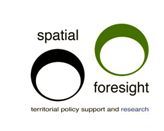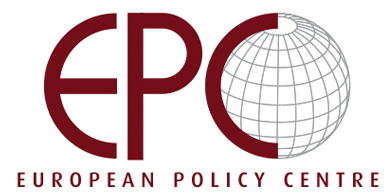By European Observation Network for Territorial Development and Cohesion, 2011
The reform of the Common Agricultural Policy in the framework of the Agenda 2000 boosted the significance of rural development in this sector policy. Rural development, in line with the Lisbon/Gothenburg Strategy, is conceived to support job creation and economic growth in rural areas in a sustainable way.Against this backdrop, this project will provide evidence on the development opportunities of diverse types of European rural areas and reveal options for improving their competitiveness. It will identify opportunities for increasing regional strengths through territorial cooperation and analyse the potential impact of climate change on the development opportunities of rural areas.
Scenario 1: Gradual climate change + Deregulated Market Economy (BAU)
In many ways this is close to a “business as usual” scenario. With the exception of a shift of agriculture towards the para-productivist model, and a substantial growth in new forms of energy production, the current processes of change would continue. This would probably be associated with a continued increase in regional differentiation.The opening decade of the new millennium saw the emergence of financial markets as the primary means of allocating resources in EU member states and heightened awareness of the implications of climate change. Despite the global crisis of 2007 – 2010, financial markets continued to function without significant regulation. Innovations in estimating risk allowed markets to account for, and communicate this risk. Though financial markets continue to be cyclical they have not, as of 2030, experienced a repeat of the 2007 – 2010 crisis. Climate change is gradual with some regions, particularly those in South, East and Central Europe, witnessing increases in mean temperatures and decreased in precipitation. Regions in the North and West of Europe also experienced increased temperatures, particularly during winter months. The incremental nature of these developments allowed the market, with limited State / EU supports, to lead the adjustment to the new conditions.
Scenario 2: Gradual climate change + Highly
Regulated EconomyIn the second scenario the impact of the credit crunch leads to a more cautious and regulated form of economic governance in which a shortage of capital inhibits both the private and public sector responses to the gradually emerging climate change effects. Limited mitigation means that even gradual climate change has significant impacts upon economic activity and quality of life in rural Europe, resulting in intensified out-migration from agrarian and sparsely populated regions. Energy costs rise but the development of renewables is modest, leading to an increasing dependence on nuclear power. Increasing freight costs provide a degree of import protection, and slow the decline of manufacturing in Europe. Reduced consumer spending and shortage of capital inhibits the expansion of the tertiary sector.
Scenario 3: Rapid Climate Change + Deregulated
Market EconomyRapid and disruptive climate change attaches a premium to land as a basic resource underpinning both adaptation and mitigation measures. Food prices rise, renewable energy production and bio-technology industries expand rapidly. Agricultural production intensifies and increasingly adopts bio-technology. There is a concentration of control of the (rural) means of production in corporate hands. The tertiary sector is buoyed up by an expansion of financial services, and private investments in research and development, although the benefits are largely restricted to accessible rural areas.
Scenario 4: Rapid Climate Change + Highly
Regulated EconomyThe rapid onset of climate change results in a coordinated consensus-based public policy response. There is rapid public investment in new forms of nuclear power and careful regulation of the use of rural land, to ensure food supplies. There are strong and selective migration flows from South, East and Central Europe into the North and West, and towards major cities. Public transport systems, using low/zero emissions technologies lead to compact urban growth. Fossil fuel use is reserved for food production, whilst cropping is also regulated to reduce the production of GHGs. The primary and secondary sectors are reinvigorated by the public policy response focused upon sustainability. The shift in favour of the tertiary sector slows or is reversed.





